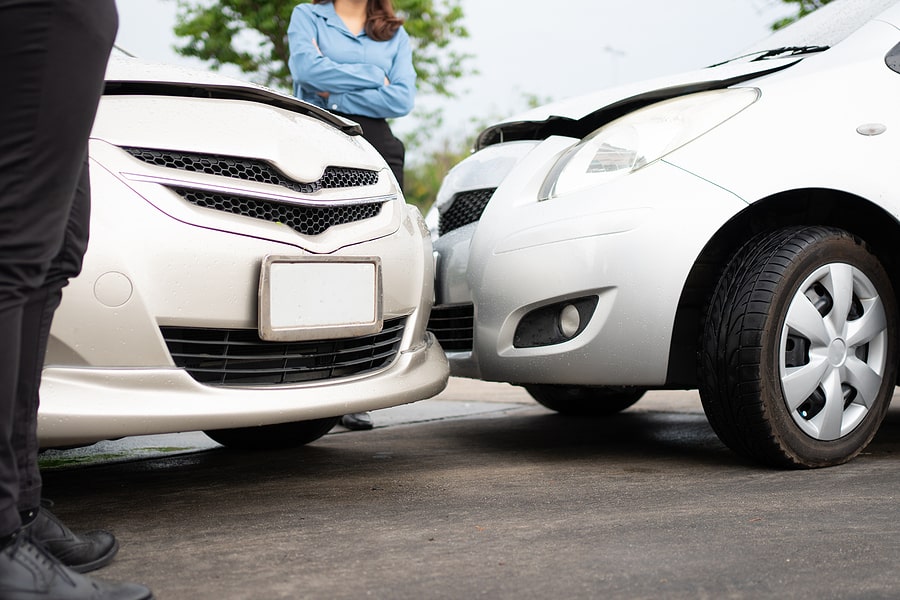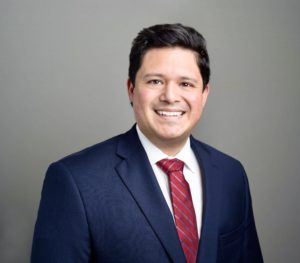Car accidents happen in a flash, but a variety of factors may contribute to them. The shock and trauma of an accident can make it hard to remember all the details that led up to the crash. Therefore, figuring out who is at fault can be difficult.
After an accident, saying “I’m sorry” seems like the polite thing to do, especially if the other driver is angry. However, an apology can be considered an admission of guilt in a lawsuit, and you may not actually be at fault.
Why fault matters
Fault matters because when an accident happens, the parties, and their insurance companies, must know who is legally at fault—because that person is responsible for an injured party’s damages.
Generally speaking, states have either fault or no-fault insurance systems. In Texas, for example, there is a fault-based system of personal injury recovery, which means that the party at fault for the accident will be responsible for compensating the injured party for the amount they are responsible for.
In Texas, the current minimum liability limits are 30/60/25 coverage, which means that the limits are:
- $30,000 for each injured person;
- Up to $60,000 per accident; and
- $25,000 for property damage per accident
If the injured driver’s injuries or damages exceed the coverage amount of the at-fault driver’s insurance, then the injured person would be able to sue the at-fault driver to collect the difference.
Common indications of fault
Every car accident is unique, and some of them are very complicated. However, certain indications may suggest fault, such as:
Obvious traffic law violations
According to the Insurance Information Institute (III), approximately 63 percent of accidents result from traffic violations.
Some of the most common traffic violations that result in accidents are:
- Failure to yield
- Following too closely
- Speeding
- Cell phone use
- Failing to obey signs and signals
- Driving under the influence (DUI)
Such actions increase the probability of an accident.
Rear-end collisions
In rear-end collisions, the driver who rear-ends another motorist is generally assumed to be at fault. However, if more than one car is involved, each car that hits another car from behind may have some responsibility for the accident.
Drivers must allow enough space between them and the driver in front in case the vehicle in front stops suddenly. Rear-end collisions happen everywhere, but they often occur at stoplights, in parking lots, in heavy traffic on the freeway, and when someone has stopped in the middle of the road.
There are exceptions to the rear-end collision fault assumption. For example, the driver in front may have been negligent if they failed to maintain their brake lights.
Left turns
Another common scenario is when a car making a left turn hits a vehicle going straight. This often occurs because the turning driver entered the intersection without enough time and room to safely make the turn.
These accidents are recognizable because the turning driver will usually have damage on the front of their car, while the other vehicle will usually be damaged on the front-right side. However, the driver may be partially at fault if they were going too fast or ran a red light.
Parking lot accidents
Thousands of crashes occur in parking lots and garage structures annually. This accident is prevalent around the holidays when drivers are distracted or in a hurry. Even if a parking lot accident takes place at a low speed, it can cause serious injuries, such as neck and back injuries. Fault can be a little more difficult to determine in these cases.
Common types of parking lot accidents include:
- A driver is hit while backing out of a parking space. Determining fault in these cases can be tricky because it depends on who had the right of way and who was moving. Generally, however, drivers preparing to back out of a parking space should first carefully check to be sure the area is clear.
- A driver exits a parking space by pulling forward through an empty space. Everyone likes to pull through an open parking space in front rather than have to back out. But sometimes another driver doesn’t see you and enters the space at the same time. Technically, the exiting driver is at fault because they are going the wrong way, but the fault issue can be complex.
- Two vehicles crash while trying to enter the same space. In this case, many people argue, “I was there first,” but again, it comes down to who has the right of way.
Common car accident injuries
Car collisions are responsible for injuries that range from minor to catastrophic.
These injuries include:
- Neck injuries. Whiplash is the most common injury from car accidents, and it’s caused by a sudden jerk of the neck while the body remains stationary. Rear-end collisions often cause neck injuries.
- Spinal or spinal cord injuries. These can lead to partial or complete paralysis.
- Head injuries. Skull fractures or closed head injuries, such as traumatic brain injuries (TBI), can easily result from car accidents. Traumatic brain injuries typically have long-term consequences.
Negligence in a car accident
To recover damages through a car crash lawsuit, you’ll have to show that the other driver was negligent.
This means you’ll have to prove:
- Duty – The other driver owed you a duty of care. For example, all drivers owe others a duty to exercise reasonable care when driving.
- Breach of duty – The other driver breached the duty of care, perhaps by failing to use reasonable care.
- Cause in fact – The breach of duty caused your injuries.
- Proximate cause -A reasonable person should have known that the failure to use reasonable care would hurt someone.
- Damages – The plaintiff must have suffered actual harm that the civil justice system can compensate them for.
Car accident damages
Once fault is established, the question becomes what damages should the injured person receive.
Possible damages include:
- Medical expenses. All current and future medical expenses, including emergency care, hospitalization, surgery, medications, therapy, and assistive devices.
- Lost wages. The injured party may have lost income and possibly the inability to return to work permanently.
- Pain and suffering. A car accident victim often suffers emotional trauma. The injured person may receive compensation for anxiety, depression, or other similar injuries.
- Wrongful death. If a loved one dies due to a car accident, family members can receive compensation for funeral costs, loss of companionship, loss of income, etc.
Proving fault in a car accident
After an accident, make no assumptions about who hit whom. Instead, let the evidence tell the story.
Evidence may include:
- The police report. Even if the accident is minor, it is important to call the police. The police will typically do a preliminary investigation and determine whether any of the drivers broke any laws. They will also interview all parties and witnesses. The report will also include the law enforcement officer’s observations. Their testimony can establish fault for the accident.
- Eyewitness testimony. Try to obtain the contact information for any witnesses. Sometimes it is difficult to locate witnesses after the accident and obtain an accurate version of what happened.
- Pictures and videos. If you are able, take photos of all vehicles and the accident scene. Note weather and road conditions, any roadwork in the area, traffic signs and signals, and anything else that may have contributed to the accident. If there are any public video cameras in the area, they may have recorded the accident.
Avoid social media. It is a good idea to avoid posting pictures or comments about your accident on social media. Anything you say may damage a future lawsuit.


